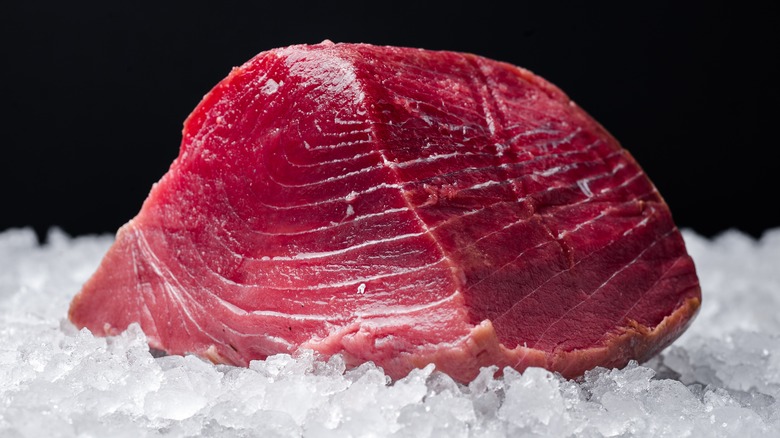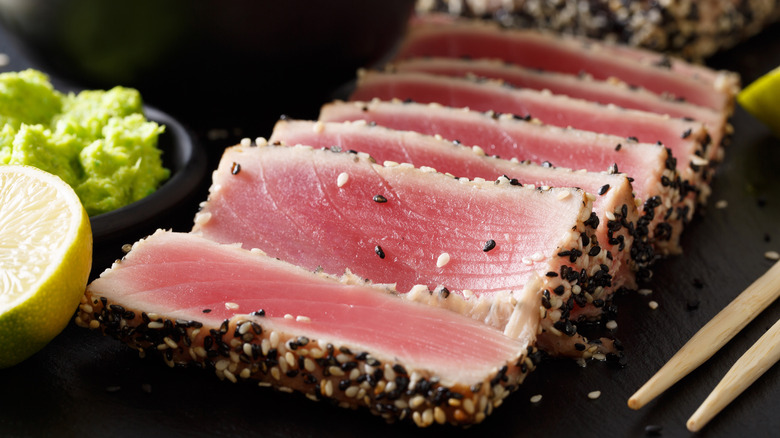Is Tuna With A Dark Center Dangerous To Eat?
Tuna can be a source of confusion, to which singer and actor Jessica Simpson can attest. Fast food chain Subway found itself in hot water not long ago with claims alleging that its tuna salad does not contain actual tuna, and debates have been ongoing for ages about whether the fish is unsafe to consume or if tuna should be touted for its health benefits.
According to WebMD, consumption of tuna can contribute to a reduction in the risk of heart disease, cancer, and issues related to vision, in addition to helping with weight loss efforts. Life Hack also lists a number of potential health benefits from consumption of tuna, including boosting cognitive function and mood, reducing inflammation, enhancing skin health, and building strong bones.
With all of the goodness that tuna appears to bring to the table, it seems reasonable to reach for the occasional deli-style tuna salad or whip up a traditional tuna casserole. Using canned tuna is an easy and inexpensive way to take advantage of the nutrients that tuna has to offer. However, if you want to get a little fancier with this fish, you can find filets to make the likes of tuna tartare or tuna confit. When you do, however, you may come across pieces with darker centers, which begs the question: Are they safe to eat?
What those dark spots in your tuna are
According to Still Tasty, you can tell tuna has spoiled if it smells sour or if the fish has become slimy. Tuna that has gone bad may also have a dull appearance, though it does oxidize quickly, which can also contribute to a less bright appearance. Instead of signaling spoilage, though, those dark centers in a tuna filet are caused by the presence of myoglobin (via MyRecipes). According to zoologist Bruce Collett, in a conversation with KUOW, myoglobin is responsible for helping muscles store oxygen, which strong-swimming fish like tuna need in abundance.
While the tuna's meat may look darker thanks to the myoglobin, MyRecipes notes that it shouldn't change the flavor of the entire fish, but it may be somewhat stronger in that particular part of the filet. Foodiosity also notes that tuna with more myoglobin, and therefore a redder hue (like Atlantic bluefin), can be substantially more flavorful than lighter colored varieties (like Albacore).
Now that you have the tools to ensure that your tuna is safe, you can feel comfortable cooking up some teriyaki tuna and mushroom skewers or making a quick tuna escabeche.

